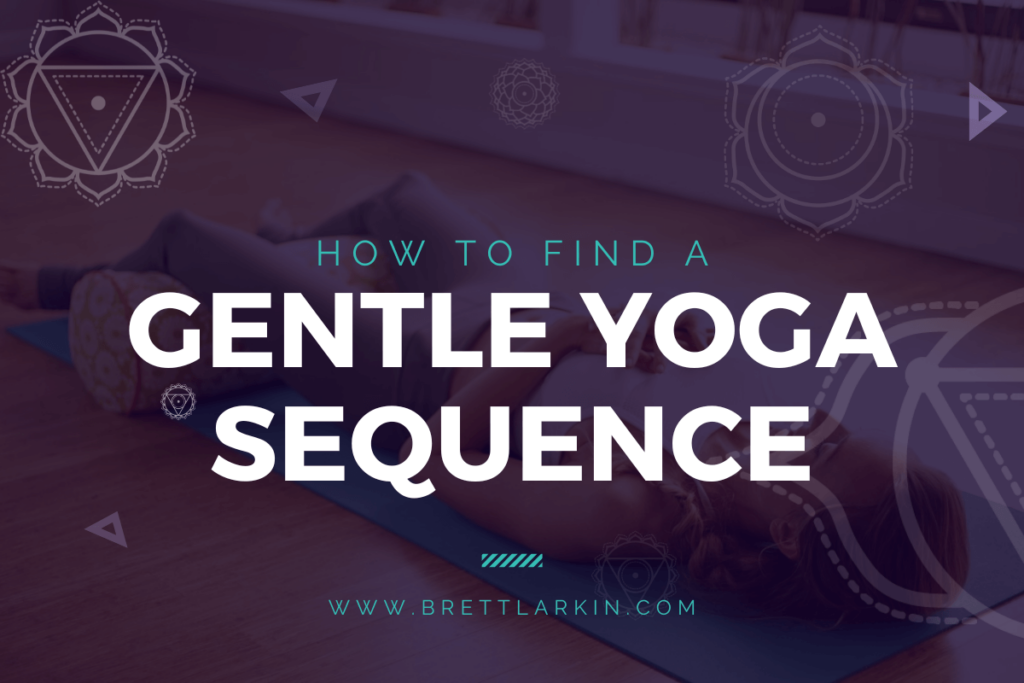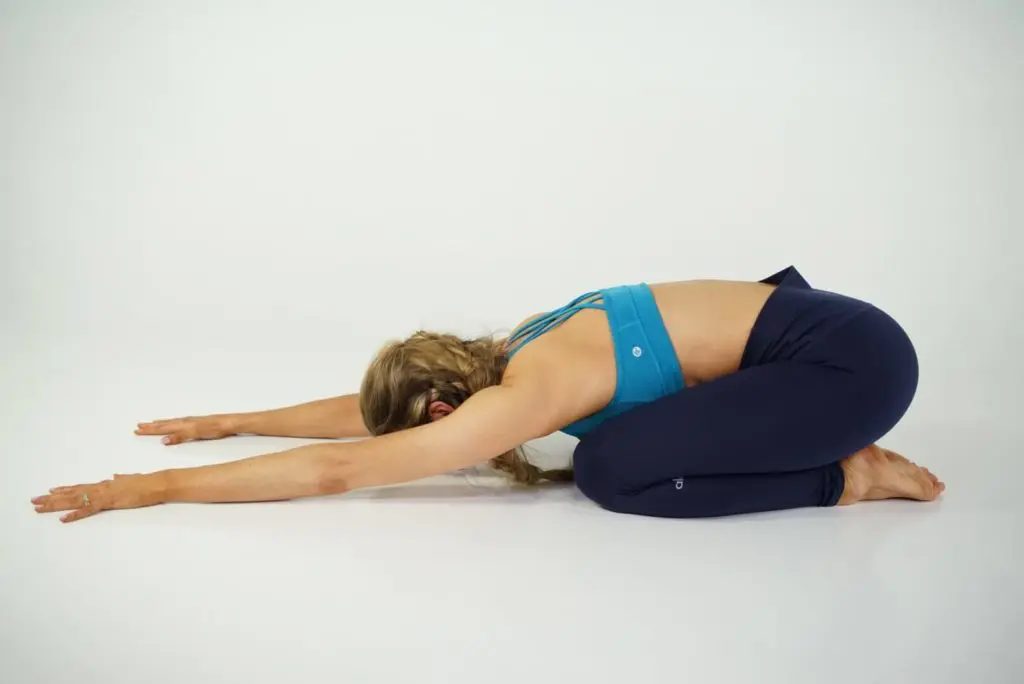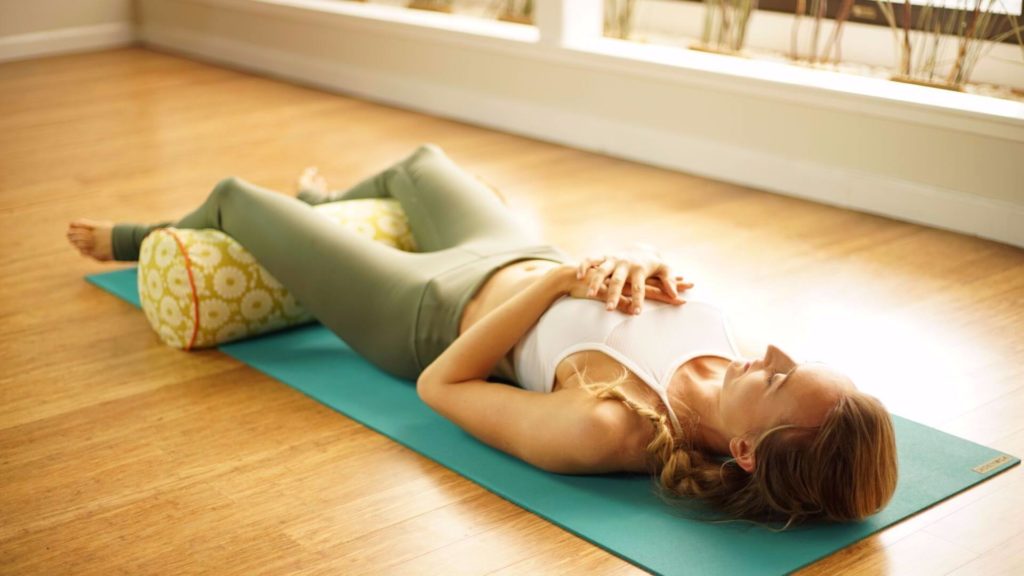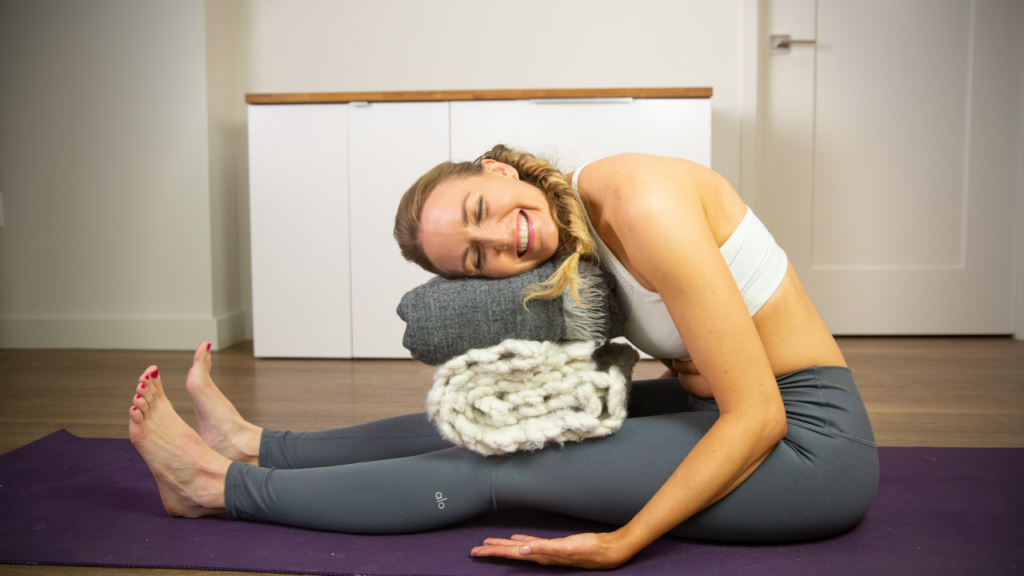Whether you’re a total newbie to yoga or a certified yoga instructor, we all have different perceptions of how a yoga practice should be. For many new students just beginning their yoga journey, their top goals are to reduce stress and relax while gaining flexibility.
(Like, it might be nice to touch your toes, right?)
However, as more and more people hop aboard the yoga train, yoga classes have begun to take on the feel of some other types of fitness classes.
There is less focus on meditative movement, and more strain on forcing the physical body to twist and bend rapidly in a series of pretzel-like shapes.
What’s the problem with pretzels? (Well, nothing. Pretzels are delicious.)
But the problem with a quick-moving, too-intense yoga session is that you may find yourself forgetting about breathing and focusing the mind.
Two very important things.
If you want higher levels of flexibility, a happy spine, and a chilled-out central nervous system, gentle yoga is the way.to.go.
A restorative yoga sequence can release tension in the neck and shoulders, hamstrings, lower back, and basically any other body part that is wound up too tightly to let you slip into an ooey-gooey state of stillness.
In short, a gentle yoga sequence is the ultimate de-stress/anti-anxiety/stillness-inducing gentle yoga practice that you can do for yourself.
Benefits of Gentle Yoga
Not all gentle yoga is created equal.
Sometimes gentle yoga will involve slowing moving through standing yoga postures, or you may spend the entire class on the floor in therapeutic poses.
It just depends.
But you can expect to reap yoga’s most powerful rewards when you slooooow things down and take a gentler route.
These benefits include reduced stress, which can help with everything from a better night’s sleep to fewer instances of road rage on your daily commute.
(Looking at you, Los Angeles-based yogis!)
Gentle yoga students also experience looser muscles, improvement with chronic pain, lowered blood pressure, better balance, and a present state of mind.
This ability to exist in the present moment without distractions is perhaps the most important gift yoga can offer.
Focusing the mind on breathing in and out throughout your gentle yoga practice is the absolute best way to harmonize your mind body and spirit.
Best Gentle Yoga Styles
When you begin your search for a gentle yoga class, you should avoid any fitness class that features words like “power yoga,” “hot yoga,” “rocket yoga,” or “advanced yoga” in the title. Be on the lookout for classes called “basic yoga,” “yoga for beginners,” “yoga for seniors,” or “postnatal” or “postpartum yoga,” if you’ve recently given birth.
Cancer patients or people with physical disabilities may also discover yoga programs tailored to their particular experience offered locally in gyms or even hospitals.
“Chair yoga,” for example, can be done from the comfort of a chair, making it a popular gentle yoga choice among seniors and those with limited mobility.
However, the gentle yoga styles most commonly found in yoga studios, gyms, and yoga teacher training courses are restorative yoga, yin yoga, and Iyengar yoga.
Restorative Yoga Poses
Restorative yoga is all about therapeutic stretches and relaxation.
Your yoga instructor will guide you to use a combination of yoga props such as blocks, straps, bolsters, or a folded blanket to make the poses accessible and calming to your body and spirit.
You may be surprised at the small number of restorative yoga postures you actually do in a single yoga session because you hold the poses for anywhere between 3 and 10 minutes.
Expect to get the best night’s sleep of your life afterward!
1. Reclined Butterfly Pose (Supta Baddha Konasana)
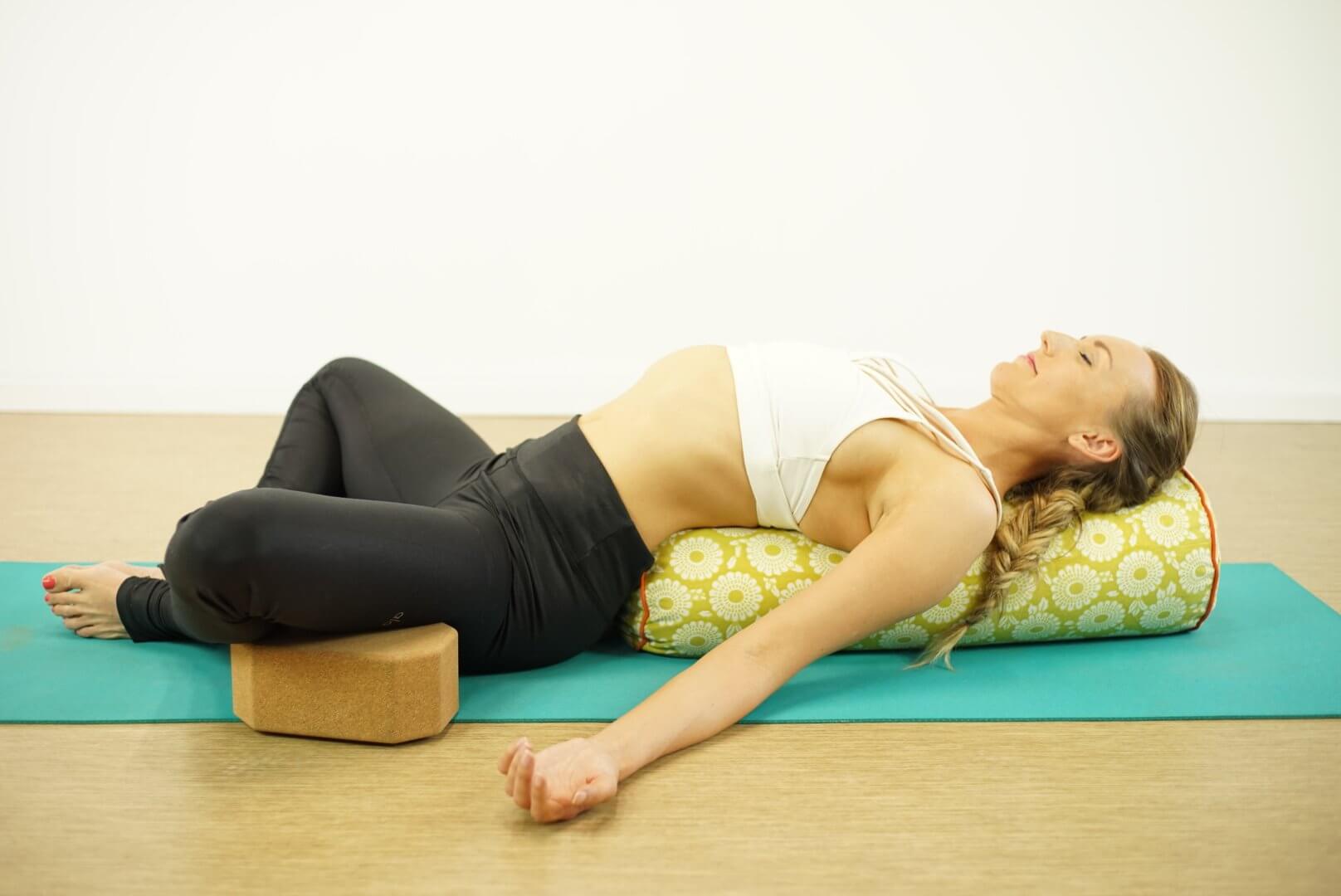
Lie back and bring the soles of your feet to touch. Open your knees out like a book, perhaps resting thighs on a block or folded blanket. Relax your arms by your sides and give your hips plenty of time to open in this pose.
2. Child’s Pose (Balasana)
With knees wide and big toes together, lengthen the spine, stretch your arms out long, and feel your tailbone grounding toward your heels in child’s pose. Allow the subtle pressure on your forehead to calm the mind as you focus your awareness on breathing deeply.
3. Corpse Pose (Savasana)
Always finish your yoga session in this pose to absorb the effects of your practice and balance your mind body and spirit. Some support under the head or knees can go a long way.

Yin Yoga Poses
Yin and restorative are similar types of yoga that enhance wellness.
Throughout a yin yoga sequence, you can find yourself taking deep breaths in a single pose for up to 10 minutes.
The idea is to hold a posture for long enough that instead of simply stretching your muscles, you wind up strengthening the connective tissue throughout your whole body.
Holding the same pose for minutes on end can feel like a meditation, so using deep breathing techniques to center the mind will aid in relaxation.
1. Seated Forward Fold (Paschimottanasana)
Bend from the hips and allow your upper body to slowly release over the legs, rather than forcing or crawling your way forward. Relax your head and neck, supporting the chest with a pillow or bolster if you like.
2. Figure 4 Stretch (Supta Kapotasana)
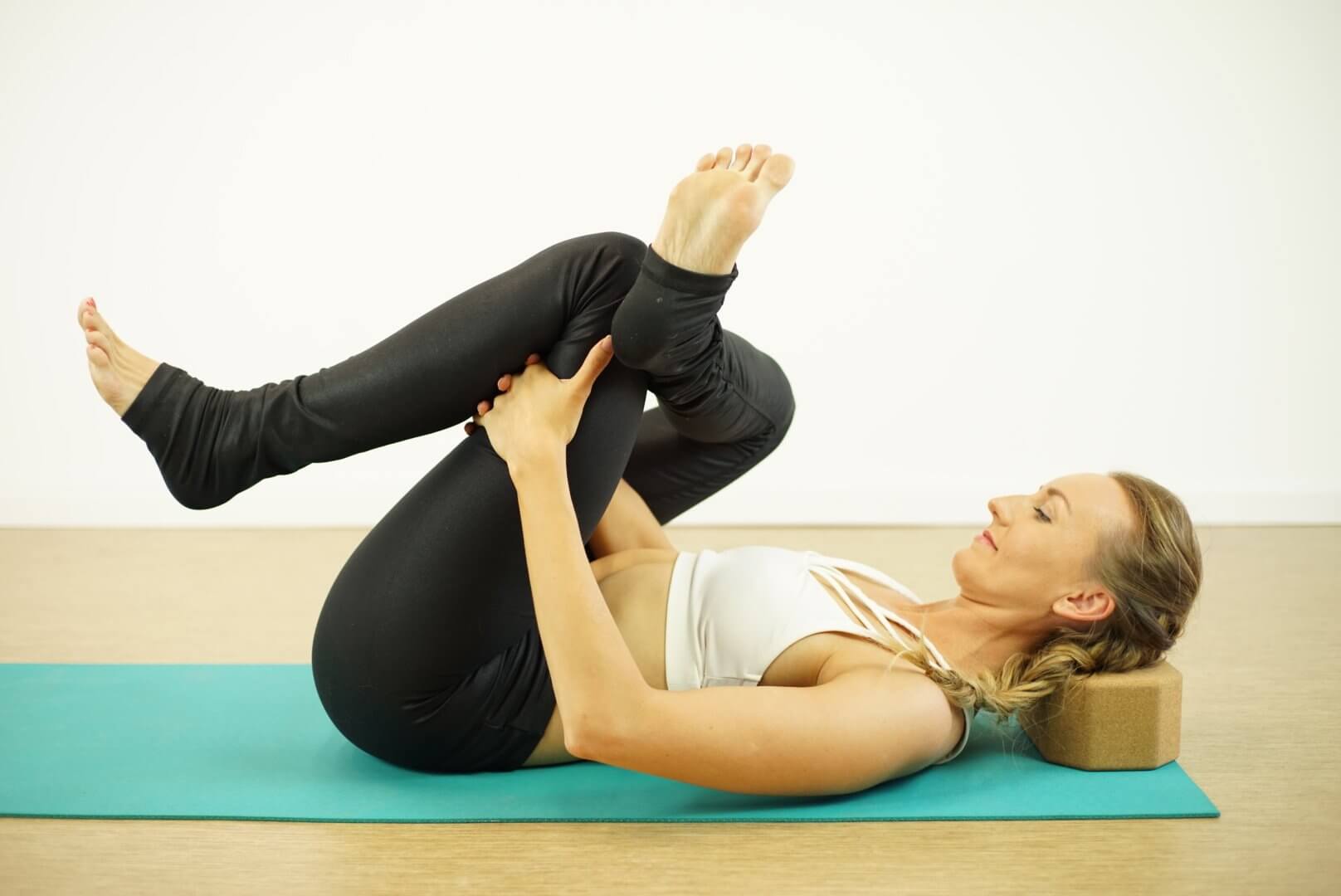
Open each hip flexor but keep your upper body relaxed and your feet flexed to protect your knee joints in this classic yoga exercise.
3. Bound Angle Pose (Baddha Konasana)
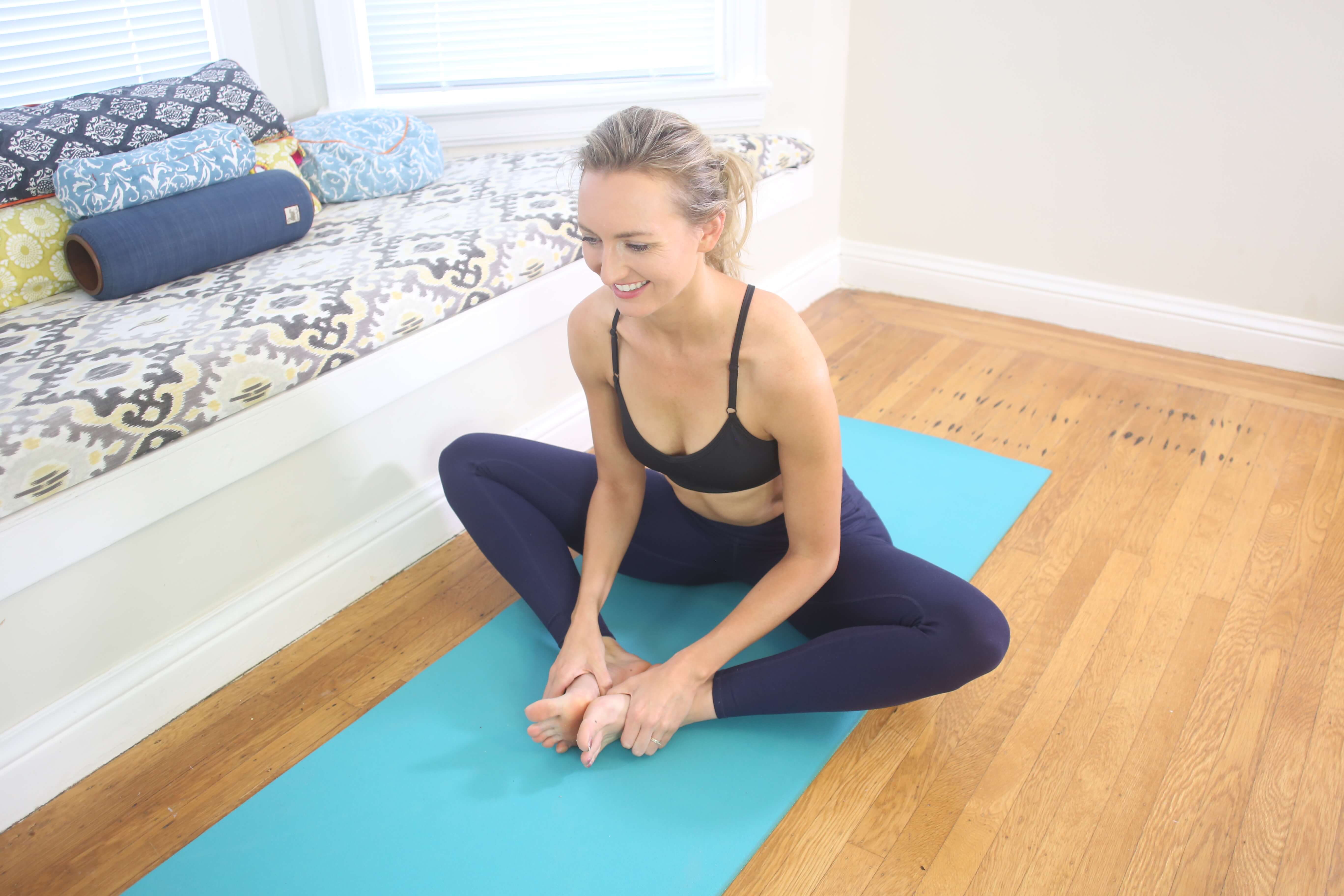
Use this basic yoga pose in your toolbox of techniques to reduce stress and promote health and wellness in your hips and blood pressure.
Iyengar Yoga Poses
Iyengar is one of the more traditional types of yoga that stems from Hatha yoga. While many of the postures taught by certified yoga Iyengar teachers require advanced strength and flexibility, Iyengar can still be a proper gentle yoga choice because it emphasizes safety and alignment principles.
People with chronic pain or even cancer patients can find their bliss in an Iyengar yoga fitness class by using plenty of props to assist the physical body.
1. Rag Doll Forward Fold (Uttanasana)
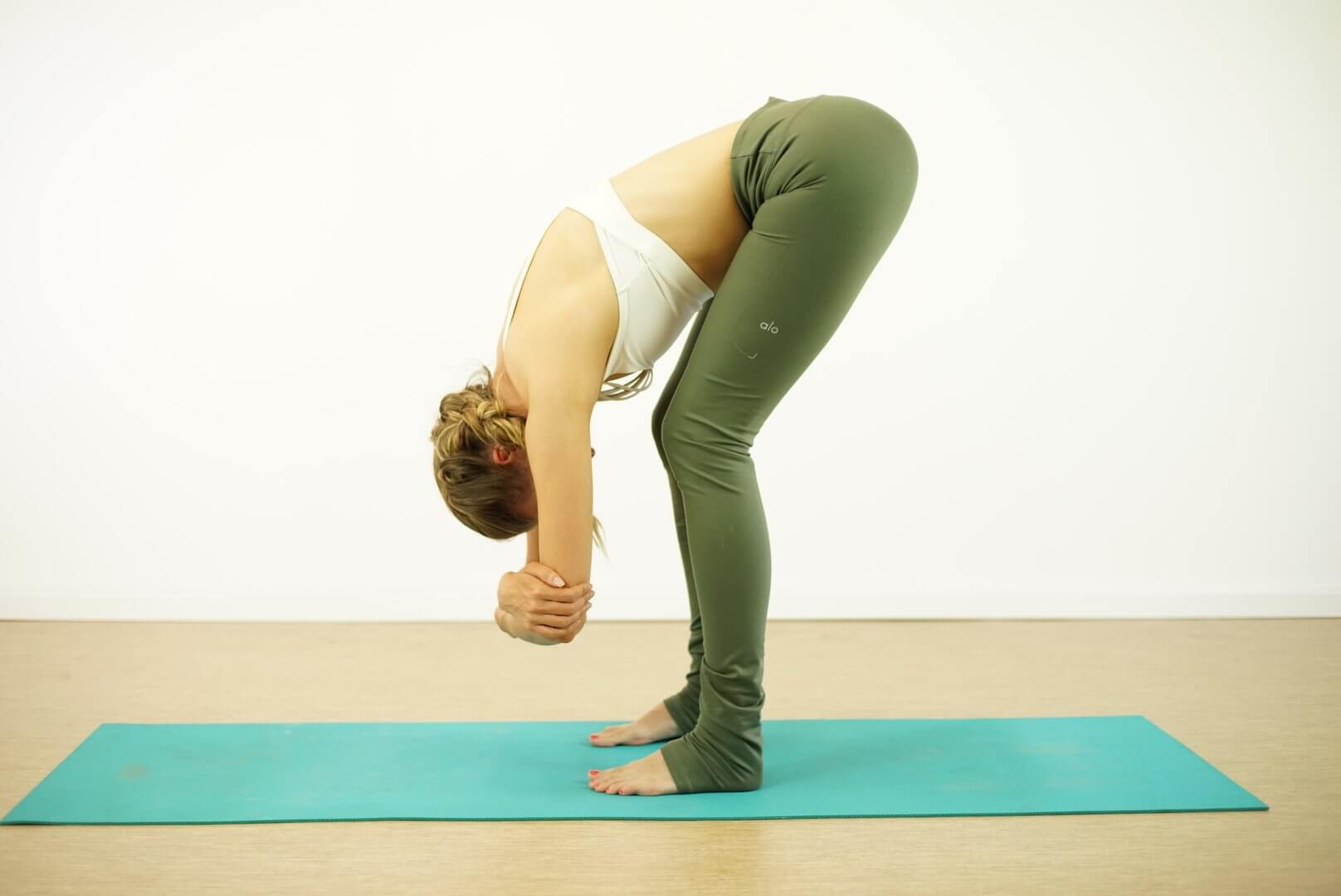
In this twist on the classic Hatha yoga pose, feel free to bend your knees generously, rest your hands on a block, and imagine all your stressful thoughts pouring out of the top of your head.
2. Low Lunge Pose (Anjaneyasana)
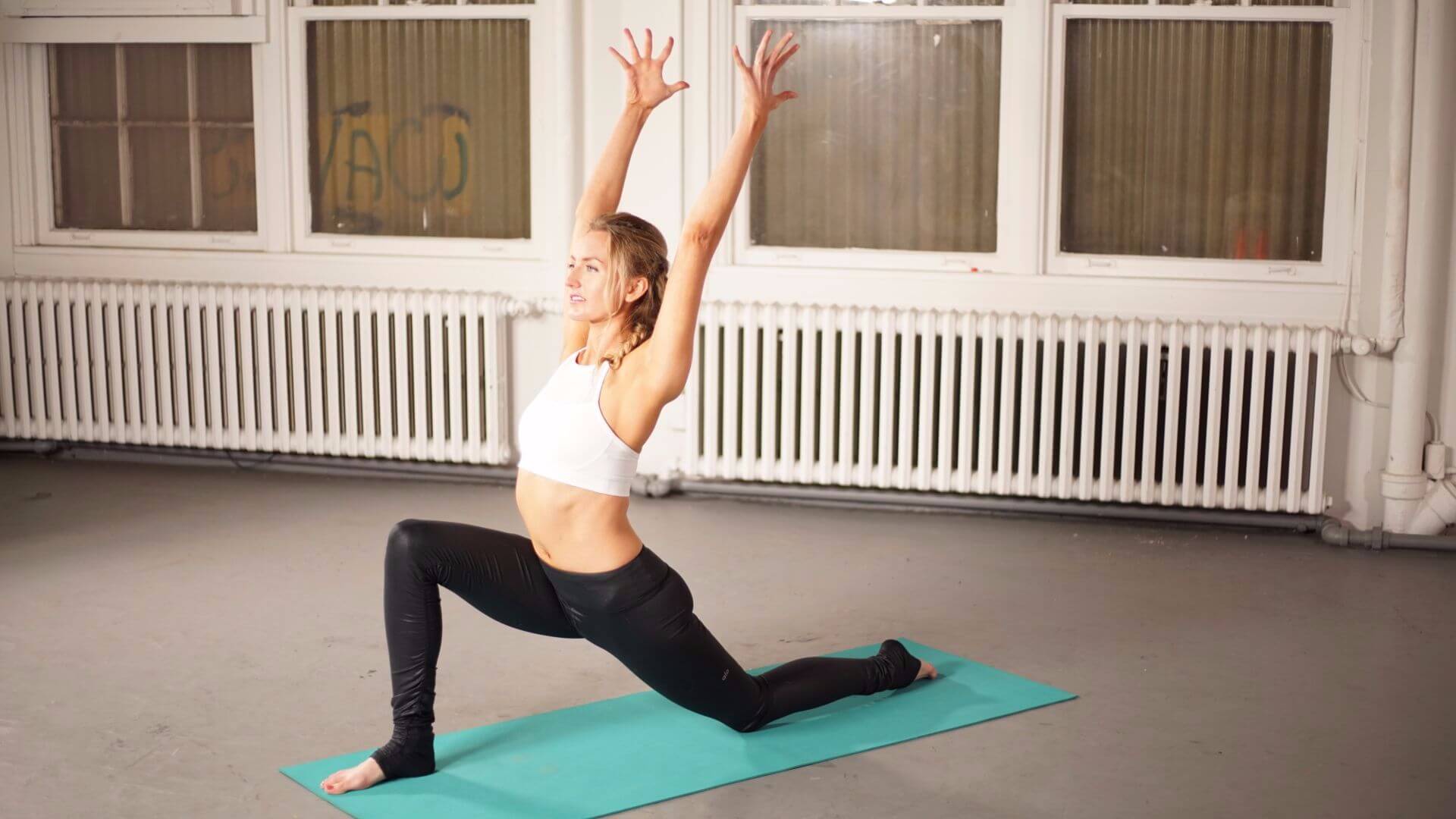
Working one side at a time, stretch your front hip flexor to fight the effects of chronically sitting in a car, at a desk, or plopped on the couch. With each inhale, broaden through your heart and grow tall through your spine.
3. Bridge Pose (Setu Bandha Sarvangasana)
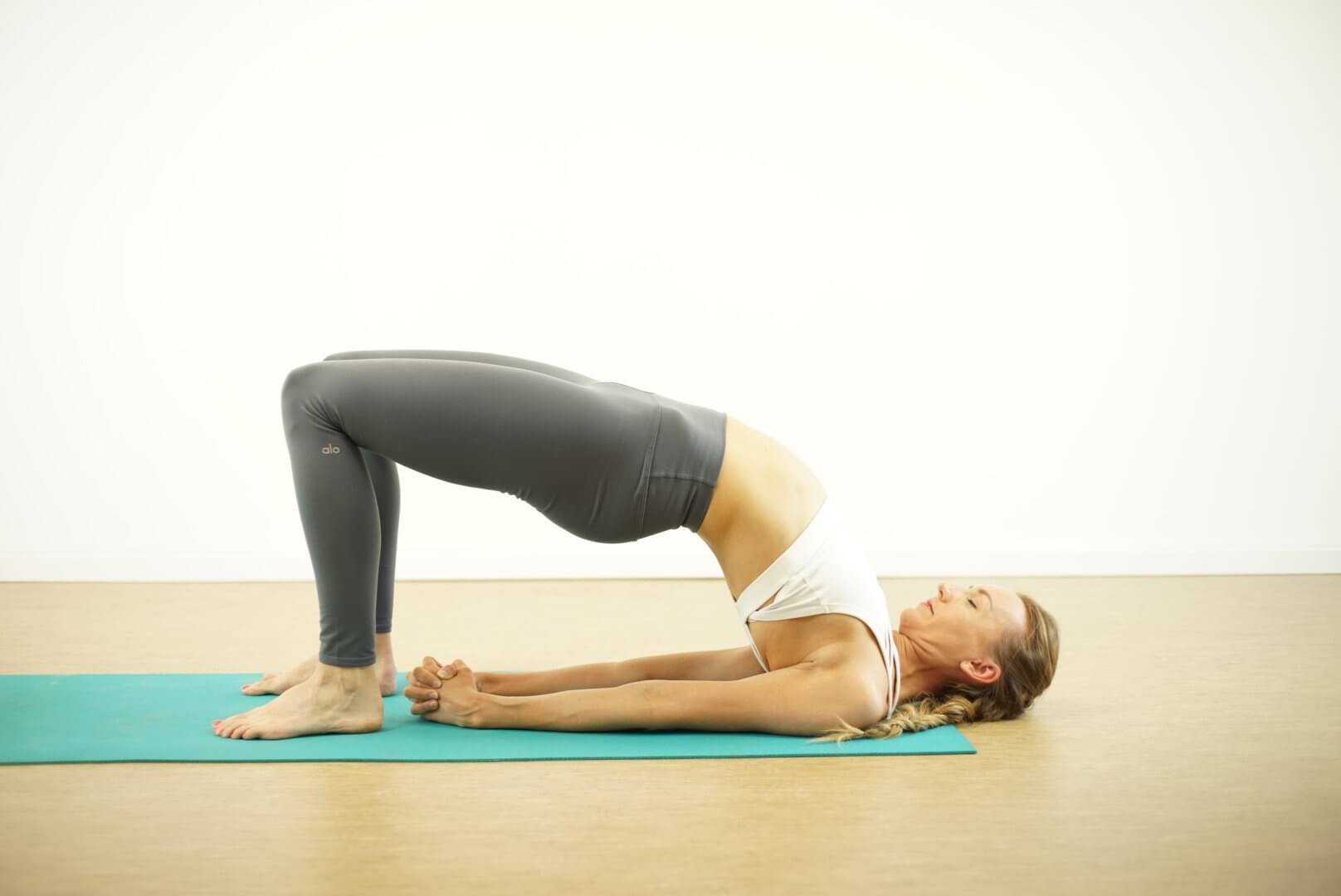
Calm your mind, slow your breath, and uplift your body and spirit with this gentle yoga inversion. Patients with neck pain will want to avoid twisting their gaze from side to side, and instead allow the eyes to rest at one point on the ceiling.
Try This Gentle Yoga Video For At Home
Next Steps
- If you’re interested in practical kriya yoga as a way to improve your daily life and relationships, check out my Yoga for Self Mastery course.
- Order my Yoga Life book for a practical guide to creating balance in your life through yoga.
- Check out my YouTube channel and find some yoga classes that you can try out for yourself!
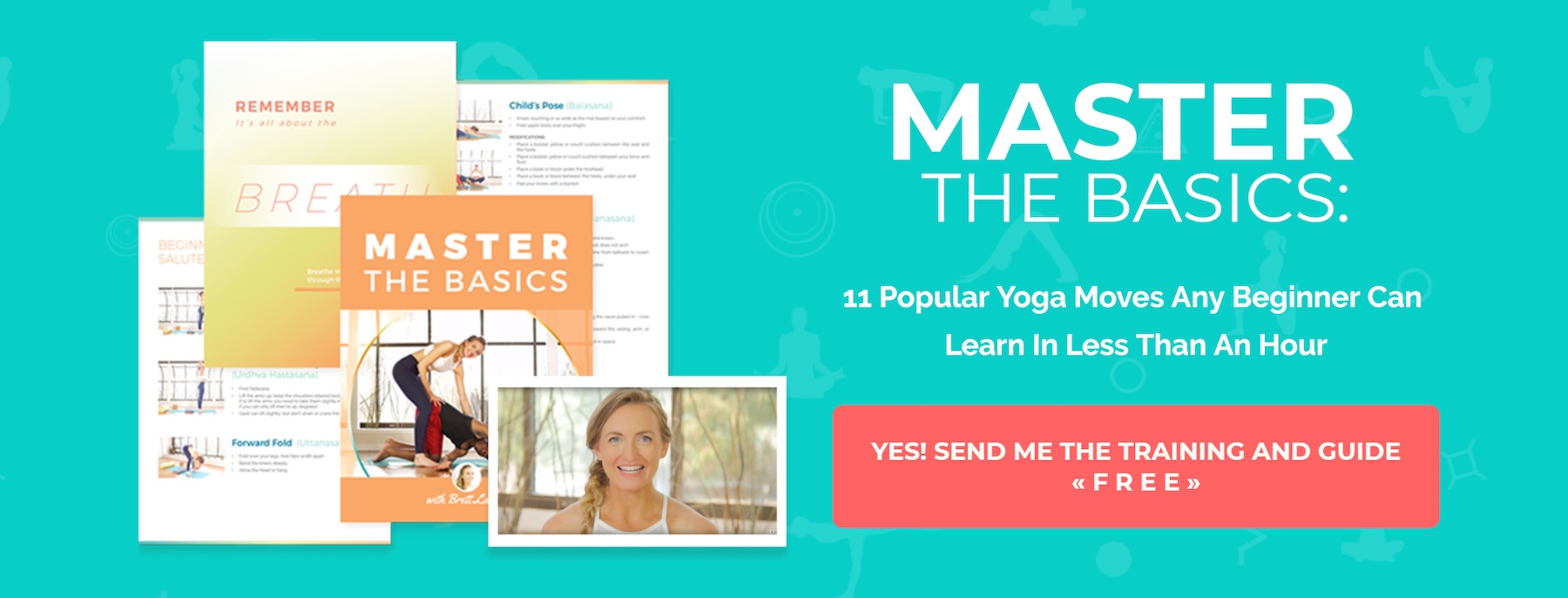
Learn how to do 11 of the most popular yoga poses correctly. Free video + PDF download.

YOU MIGHT ALSO LIKE
- What Is Somatic Yoga? Everything You Need To Know
- What is Kriya Yoga? The Philosophy and Practice
- Try This 30-Minute Yoga Nidra Script for Deep Sleep and Relaxation [+ Video]
- 9 Fierce Kundalini Yoga Poses to Light Your Inner Fire
- Tantra Yoga: The Most Misunderstood Path of Yoga
- Styles and Types of Yoga: The Complete Beginner’s Handbook
- What is Hatha Yoga? The Origins, Definition, Poses, & Practice
- What Is Trauma Informed Yoga And Should I Get Certified?
- How To Do High Lunge Pose
- 10 Yin Yoga Poses To Melt Away Stress (For Beginners)
- Amazing Benefits of Ashtanga Yoga That Your Studio Won’t Teach You
- Earthing Yoga 101: 6 Poses To Connect With The Earth (Root Chakra)
- Find A Gentle Yoga Sequence That Anyone Can Do
Learn how to do 11 of the most popular yoga poses correctly. Free video + PDF download.


